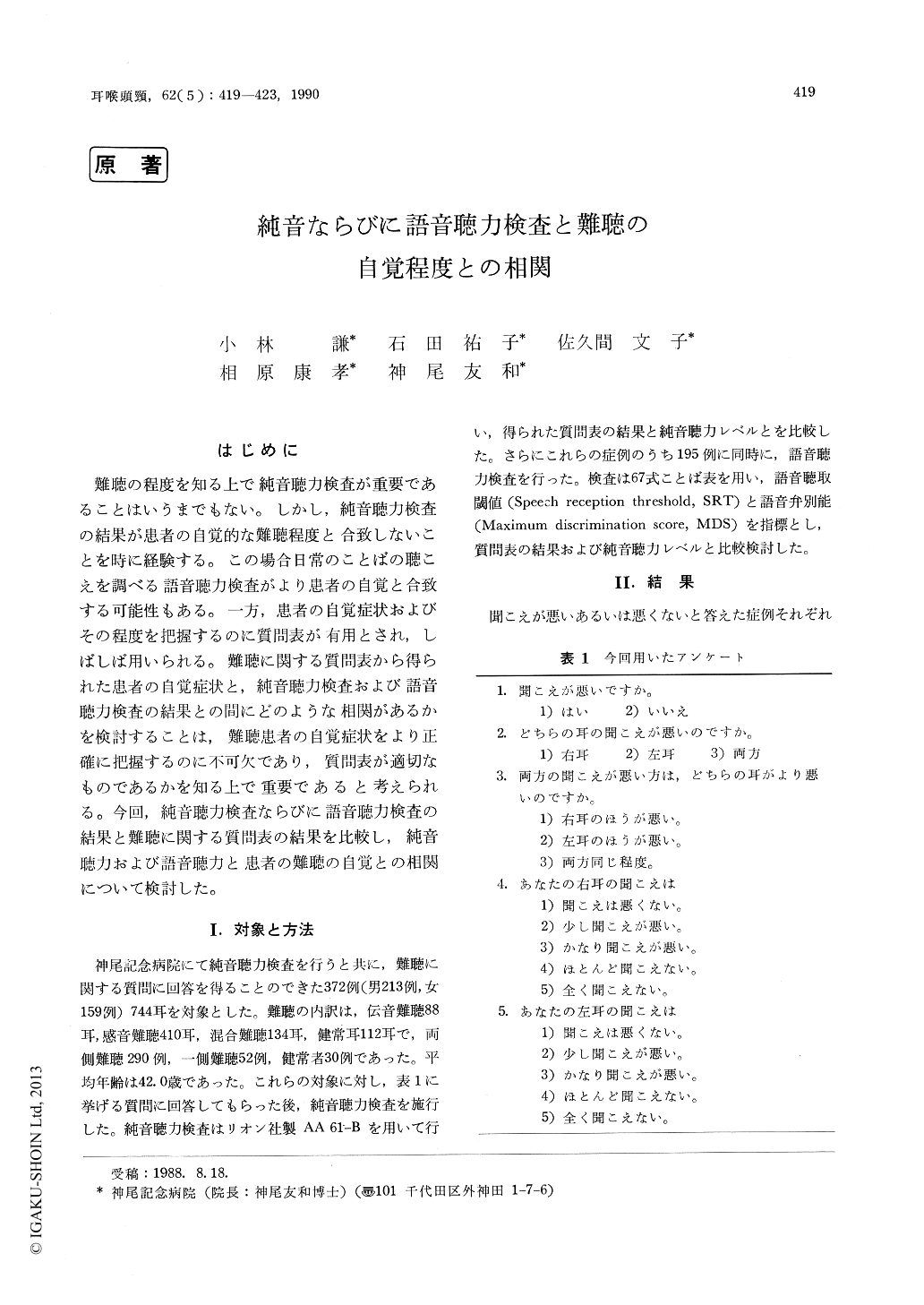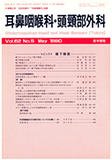Japanese
English
- 有料閲覧
- Abstract 文献概要
- 1ページ目 Look Inside
はじめに
難聴の程度を知る上で純音聴力検査が重要であることはいうまでもない。しかし,純音聴力検査の結果が患者の自覚的な難聴程度と合致しないことを時に経験する。この場合日常のことばの聴こえを調べる語音聴力検査がより患者の自覚と合致する可能性もある。一方,患者の自覚症状およびその程度を把握するのに質問表が有用とされ,しぼしば用いられる。難聴に関する質問表から得られた患者の自覚症状と,純音聴力検査および語音聴力検査の結果との間にどのような相関があるかを検討することは,難聴患老の自覚症状をより正確に把握するのに不可欠であり,質問表が適切なものであるかを知る上で重要であると考えられる。今回,純音聴力検査ならびに語音聴力検査の結果と難聴に関する質問表の結果を比較し,純音聴力および語音聴力と患者の難聴の自覚との相関について検討した。
Correlation of the results of the questionnaire for a subjective hearing loss with pure-tone hea-ring level, speech reception threshold (SRT) andmaximum discrimination score (MDS) was analysed in 374 patients. In most patients with slight or moderate hearing impairments, pure-tone hearing level, SRT and MDS were related with the self-assessment for subjective hearing loss. In the patiens with severe hearing impairments, pure-tone hearing level was also related with the self-assess-ment. On the other hand, SRT and MDS were not relate to the self-assessments in these patients. These results suggest that we can estimate pure-tone hearing level, SRT and MDS from the self-assess-ment for hearing in patients with slight or mo-derate hearing impairment. However, it is not easy to evaluate the self-assessment for hearing in the patients with severe hearing impairment.

Copyright © 1990, Igaku-Shoin Ltd. All rights reserved.


